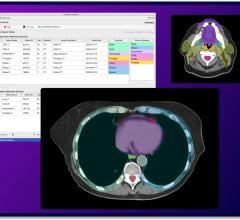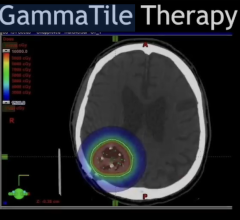
New for 2023, in each issue, Imaging Technology News (ITN) will profile a leader in radiology to share insight, updates and initiatives on a range of hot topics impacting the medical imaging community.
This month, our One on One ... column features Kim L. Sandler, MD, who addresses the topic of lung cancer screening. The full video interview with Sandler can be found at www.itnonline.com/videos.
ITN: What is new and what is next in lung cancer screening?
Sandler: Lung cancer screening in and of itself is still a pretty new screening test when we think about it in the context of breast cancer and colon cancer screening. We really only had the data to support lung screening on a national effort in 2011, then started more widely in 2015, after exams started to be covered by Medicare and other Affordable Care Act compliant insurance providers. In 2021, the screening guidelines were expanded, nearly doubling the number of Americans eligible, and started to address some real disparities that we were seeing in screening eligibility, specifically in women and black Americans. We saw that lung cancer was developing in those with younger ages and less tobacco exposure. We haven’t fixed everything, but we really made a giant step forward in expanding that eligibility criteria.
ITN: What is creating this momentum?
Sandler: We’re starting to have the opportunity to not only look at the randomized control trials that support lung screening, showing up to, and maybe even more than, a 20% reduction in mortality from lung cancer. But now we’re starting to see those results in our own programs. Early-stage detection is essential when we talk about survival. Our true success story is to find a lung cancer when it’s small enough and localized that a patient can undergo a minimally invasive resection, not require chemotherapy or radiation therapy, only have a small surgery, hopefully go home within a couple of days, and then have surveillance imaging. That is really a true success and a curative resection of lung cancer. So that’s our goal.
ITN: What do you recommend to other radiologists to support expanded screenings?
Sandler: I think lung screening is a really interesting study. It’s the only study in radiology that requires a shared decision-making visit where the patient actually undergoes a conversation with a healthcare provider — which may be in radiology, it may be primary care, or other fields, where the patient has an opportunity to hear about the risks and benefits of lung screening before making the decision to be screened. As radiologists we have an opportunity to really drive improvement in enrollment.
ITN: What is the outlook for the future?
Sandler: There are really two big questions surrounding lung screening. One addresses how we reach those eligible individuals who’ve not yet enrolled but meet current criteria: how do we do a better job in radiology and other parts of our healthcare system to get people enrolled in lung screening? The second is: how do we define high risk? Right now, we define high risk for lung cancer and screening eligibility based on age and tobacco exposure. But there are other things that we know increase risk, like radon exposure. We know there’s some genetic predisposition, so we look at family history, occupational exposures. There are risk prediction models that actually start to take those things into account. How do we start to think about high risk, and who is the best population to benefit from screening?
I think we’re going to address those issues in parallel, to work to continue to enroll those who meet current guidelines, while continuing to ask questions, maybe in a research environment, about who should be screened. Another thing I want to add is blood-based biomarkers. We’re starting to see the emergence of a number of different biomarkers that can help to determine cancer risk.
In the future, what I think we’ll see is all of those pieces coming together for a really personalized risk assessment as to who will benefit from screening. Lung screening really is a powerful tool to save lives and increase the number of lung cancer survivors.
Related Lung Imaging Content:
Special Report on Lung Cancer and Screening Initiatives
Special Report on Lung Cancer and Screening Initiatives, Part II
American Lung Association Addresses Awareness on World Lung Cancer Day
MRI Sheds Light on COVID Vaccine-Associated Heart Muscle Injury
What We Know About Cardiac Long-COVID Two Years Into the Pandemic
VIDEO: Long-term Cardiac Impacts of COVID-19 Two Years Into The Pandemic — Interview with Aaron Baggish, M.D.
VIDEO: Long-COVID Presentations in Cardiology at Beaumont Hospital — Interview with Justin Trivax, M.D.
VIDEO: Cardiac Presentations in COVID Long-haulers at Cedars-Sinai Hospital — Interview with Siddharth Singh, M.D.
Find more COVID news and videos
PHOTO GALLERY: How COVID-19 Appears on Medical Imaging
VIDEO: How to Image COVID-19 and Radiological Presentations of the Virus — Interview with Margarita Revzin, M.D.
American Lung Association Addresses Awareness on World Lung Cancer Day
Find more radiology related COVID news and videos


 May 06, 2024
May 06, 2024 








